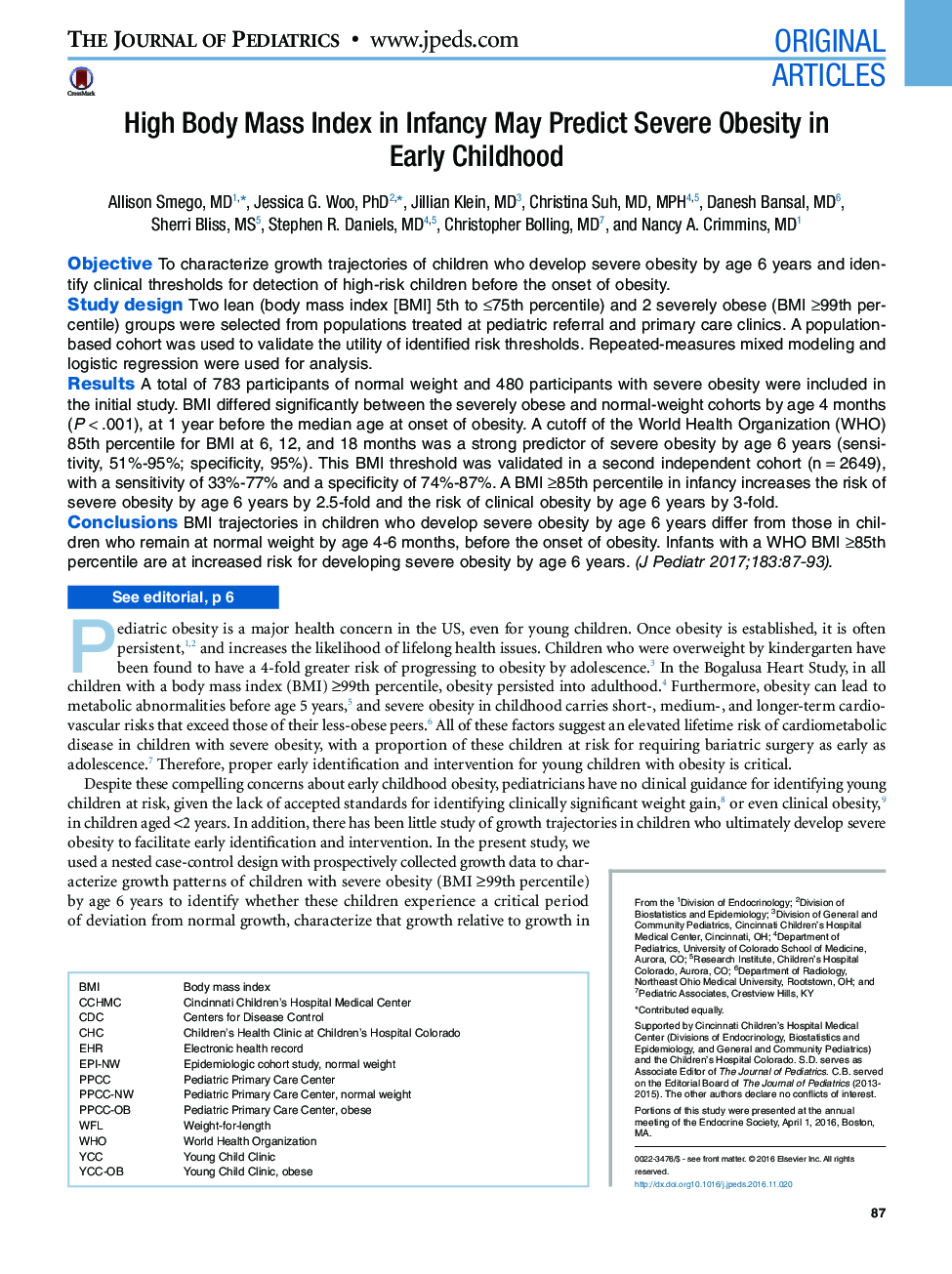| Article ID | Journal | Published Year | Pages | File Type |
|---|---|---|---|---|
| 5719383 | The Journal of Pediatrics | 2017 | 8 Pages |
ObjectiveTo characterize growth trajectories of children who develop severe obesity by age 6 years and identify clinical thresholds for detection of high-risk children before the onset of obesity.Study designTwo lean (body mass index [BMI] 5th to â¤75th percentile) and 2 severely obese (BMI â¥99th percentile) groups were selected from populations treated at pediatric referral and primary care clinics. A population-based cohort was used to validate the utility of identified risk thresholds. Repeated-measures mixed modeling and logistic regression were used for analysis.ResultsA total of 783 participants of normal weight and 480 participants with severe obesity were included in the initial study. BMI differed significantly between the severely obese and normal-weight cohorts by age 4 months (Pâ<â.001), at 1 year before the median age at onset of obesity. A cutoff of the World Health Organization (WHO) 85th percentile for BMI at 6, 12, and 18 months was a strong predictor of severe obesity by age 6 years (sensitivity, 51%-95%; specificity, 95%). This BMI threshold was validated in a second independent cohort (nâ=â2649), with a sensitivity of 33%-77% and a specificity of 74%-87%. A BMI â¥85th percentile in infancy increases the risk of severe obesity by age 6 years by 2.5-fold and the risk of clinical obesity by age 6 years by 3-fold.ConclusionsBMI trajectories in children who develop severe obesity by age 6 years differ from those in children who remain at normal weight by age 4-6 months, before the onset of obesity. Infants with a WHO BMI â¥85th percentile are at increased risk for developing severe obesity by age 6 years.
